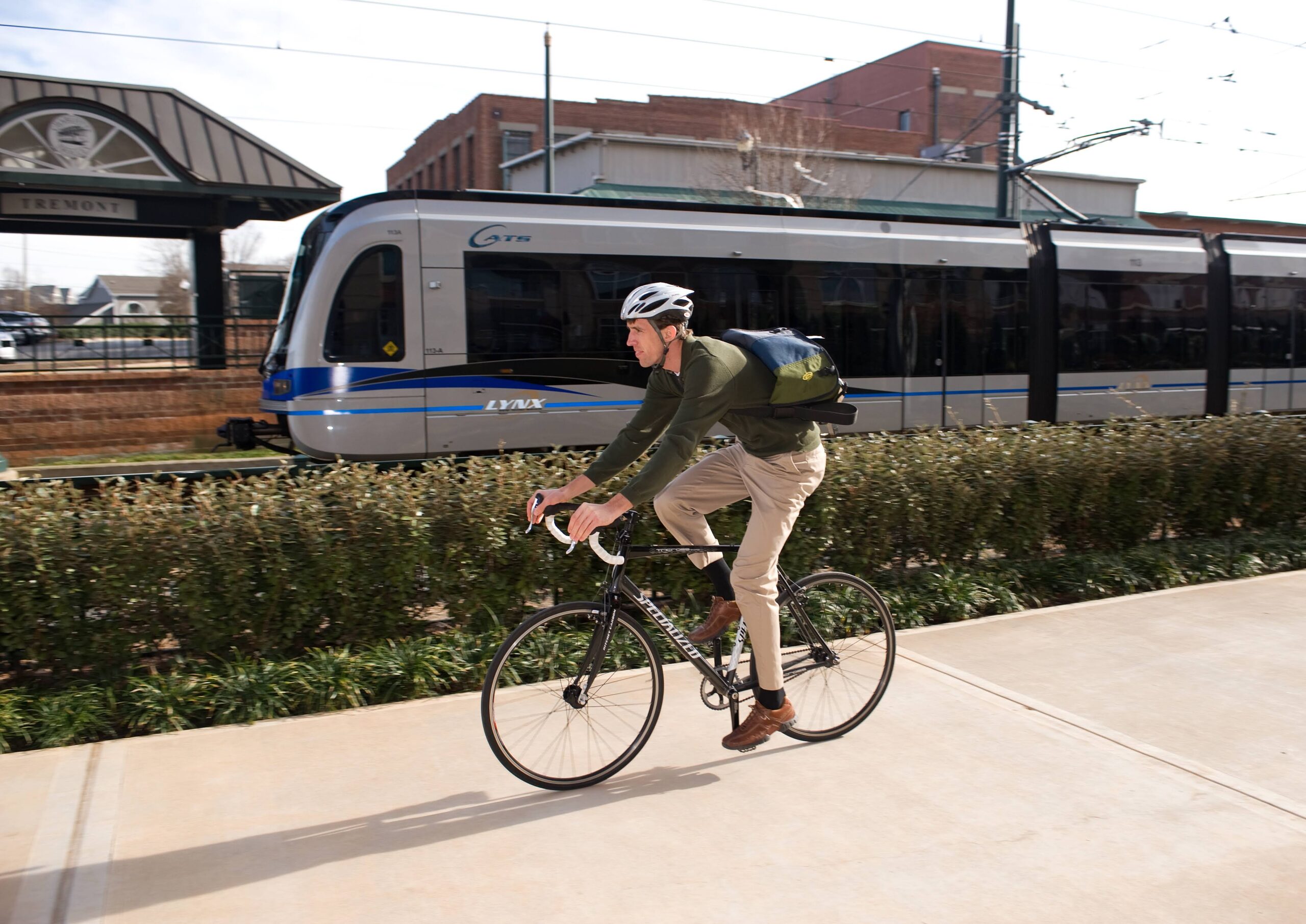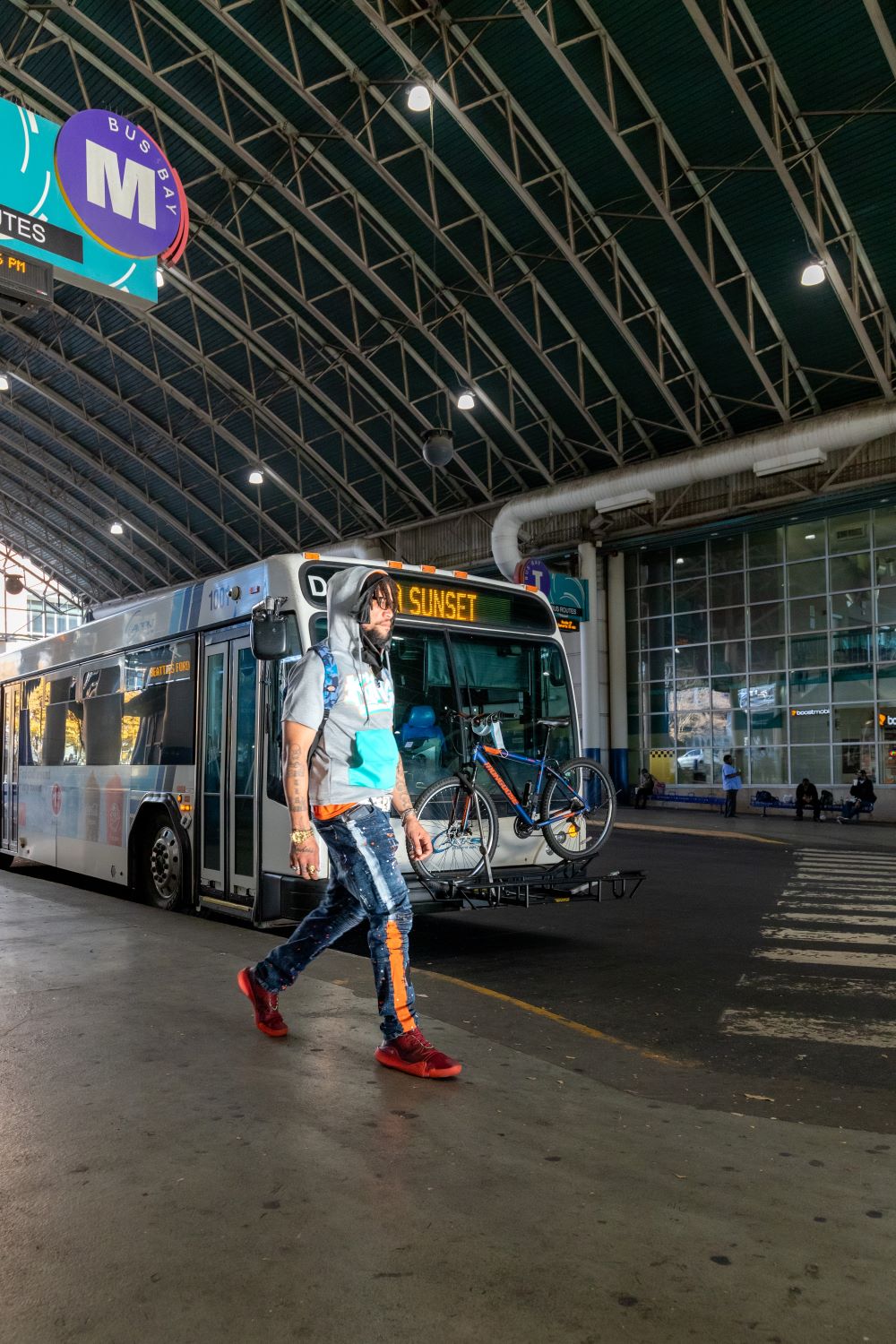Did you know that an average of 117 people move to the Charlotte region every day? That’s almost 700,000 people moving to the region by 2040. We are also ranked #8 on the list of fastest-growing economic areas in the country.
Whether you’ve lived in the area for decades or only a few months, you’ve likely noticed signs of growth all over town. A glance around the region reveals numerous residential and commercial projects under construction. Development and redevelopment are booming in our urban neighborhoods, too.
But how do we ensure that the Charlotte region remains an attractive place to live and work as we prepare to welcome almost three-quarters of a million new residents over the next 17 years?
Defining "smart growth" and why it matters for Charlotte
For decades, the region’s swelling population has rapidly expanded into previously undeveloped forest and farmland by building suburban shopping centers with vast surface parking lots, single-family homes on large lots, office parks far from residential areas, and an extensive road network designed almost exclusively to move cars as quickly as possible between them. In fact, the Charlotte-Gastonia-Rock Hill area ranks as the 6th most sprawling large metro area in the nation. This auto-centric, low-density sprawl has contributed to a number of economic, equity, and environmental problems that our region is now struggling to correct.
Fortunately, there are smarter ways to grow. Picture this: a mix of urban, suburban, and rural communities brought together by an abundance of transportation options, where jobs, shops, and schools are never out of reach. This approach supports local economies, protects the environment, and furthers opportunities for all. What an exciting time to share the future of our community by making sustainable choices today.


Strong local economy
A resilient workforce is a strong workforce. When workers have convenient and affordable transportation to employment centers or are able to live near them, both employers and workers benefit. A U.S. Census Bureau report found that accessibility to jobs significantly reduces the duration of joblessness among unemployed workers. Smart growth also helps local governments make the most of their budgets by reducing the cost of infrastructure like roadways and water systems.
Safe and healthy environment
Smart growth strategies protect the air we breathe, the water we drink, and our magnificent tree canopy. The vehicles we drive are the largest source of climate-changing greenhouse gases in our community. Sprawling, auto-centric development increases air pollution from our vehicles because it results in residents taking longer and more frequent trips by car. It also increases water pollution as more roads, parking lots and rooftops lead to more runoff into our streams and rivers. In fact, the Catawba River -- the source of our drinking water -- has twice been named one of the most endangered rivers in the nation due to the runoff caused by unsustainable development practices.
These types of pollution can be reduced by locating housing, jobs, and stores nearer to each other (commonly called mixed-use development) and providing safe and convenient opportunities for residents to ride transit, walk, or bike between them.


The link between development and transportation
The ways that we develop our land and build our transportation systems are inextricably linked in a cyclical cause-and-effect relationship.
Compact development makes mass transit economically feasible, and it allows people to live within walking or bicycling distance to work or school.
Investment in safe transit, bicycling, and walking networks creates an inviting atmosphere for developers to build residential, retail, and office buildings more compactly.
When we get all of the elements of smart growth right, the result is a city that offers a variety of transportation and housing choices for all who call the Charlotte region home.
Transportation has a remarkable impact on personal and community health. Many Charlotte area residents, like many Americans, live sedentary lifestyles made possible by communities designed and built for driving. Our efforts to increase active transportation choices (walking and biking) and parks and greenways help address the many health-related diseases associated with sedentary lifestyles including diabetes and heart disease.
People in communities with limited access to transportation options also have limited access to jobs, healthcare services, full-service grocery stores, and other essential goods and services further contributing to poor health outcomes. People in many of Charlotte’s communities of color have greater exposure to dangerous air pollutants from traffic on nearby freeways that cause asthma and other respiratory problems.
Road transport is the single largest greenhouse gas-emitting sector in Charlotte at 40% of all emissions and the largest source of criteria air pollutants such as PM2.5. This makes it even more important to invest in transportation options other than single-occupancy vehicles.
We must build infrastructure that makes it easier for everyone to get around while reducing emissions from vehicles that diminish our health and wellness.
That is why we advocate for a fast, reliable public transit network, more sidewalks, crosswalks, bike lanes, parks, and greenways.
Opportunity for all
Charlotte ranks last among the largest 50 U.S. cities for upward mobility of children born into poverty. Lack of safe and convenient ways to get from home to work or school by bicycling, walking, or transit is a hurdle to economic opportunities that can lift people out of poverty. Families in Mecklenburg County spend an average of 21% of their annual income on transportation costs, much more than the 16% national average. When children and college students can walk or bike to school, and parents take the bus or train to work instead of driving, an average household can save nearly $10,000 per year, allowing our region’s residents to improve their economic situation.
Other facts of interest
- Expense increase for one working adult with no children between 2018 and 2022 = $1,273
- Expense increase for one working adult with two children between 2018 and 2022 = $3,520
- 42% of multi-family residential permits in 2022 were for locations within 1 mile of the Blue Line
Charlotte 2030: A Sustainable Vision for Our Region
On November 1, 2010, Sustain Charlotte publicly launched Charlotte 2030: A Sustainable Vision for Our Region. This first-of-its-kind vision for our region's future is the product of countless volunteer hours, and the engagement of more than 100 local citizens and experts from many disciplines using a collaborative and consensus-based process, drawn from government, the nonprofit and private sectors, and academia.
These local citizens had expertise in one or more of the ten key issues that comprise this comprehensive vision for local sustainability. The ten issues are: Air, Energy, Food, Buildings and Homes, Economy, Parks, Trees and Green Space, Recycling and Waste Reduction, Social Equity, Transportation, and Water.
Details of the public launch, including those who expressed their support, can be found at the link above. Since 2010, we and many other local organizations and individuals have been working hard to turn this vision into a reality. Thanks to the many people who gave their time and shared their ideas to write this community vision for our future!
Resources
- Charlotte Regional Business Alliance - Number of people moving to Charlotte Region climbs to highest level in more than a decade
- Mecklenburg County Pulse Report 2022
- Smart Growth America - Measuring Sprawl 2014
- The H+T® Affordability Index
- The Office of Energy Efficiency and Renewable Energy
- American Public Transportation Association - Public Transportation Facts.
